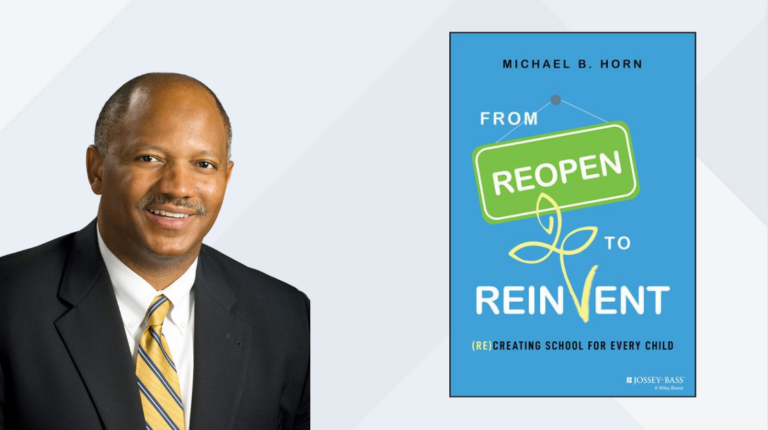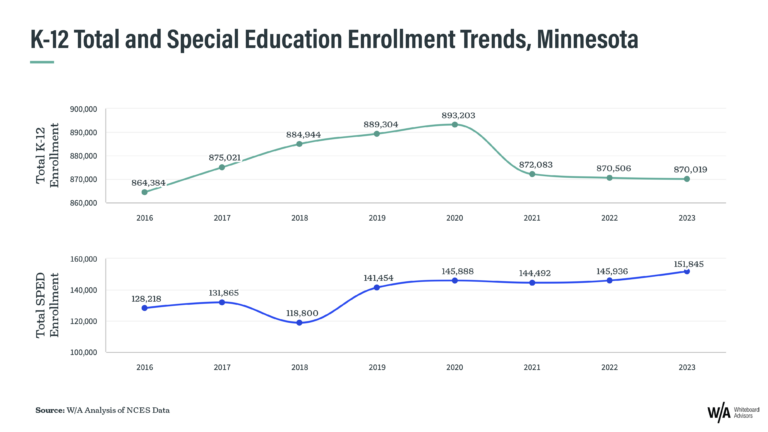As a former K-12 teacher and administrator, I understand why district leaders bristle at the phrase “disrupting education,” especially when those calling for la revolution do so from the safety of their think tank or nonprofit. It’s not that I disagree with their premise. In the U.S., school as we know it is failing students, the workforce and society writ large — with glaring inequities that, thanks to COVID-19, we can no longer afford to ignore.
But even the best ideas for “reimagining our schools from the ground floor up” can come off as exhausting and a bit naive to those of us who have spent considerable time inside classrooms. When is this upheaval supposed to take place? Mid-semester, as kids prep for standardized tests that determine how much money their schools receive? Over the summer, when burned-out educators simply want to reimagine themselves sleeping past 6:30 a.m.? Though well intentioned, these thought leaders usually offer heavy doses of idealism in their work, but skimp on practical details for dismantling structures that have been in place for a century or more.
So it was with a heavy dose of skepticism that I picked up From Reopen to Reinvent: (Re)creating School for Every Child, which proposes radical changes to how we educate the populus. Author Michael B. Horn is co-founder and a distinguished fellow at the Clayton Christensen Institute for Disruptive Innovation, which advocates for new education models that, in addition to being pedagogical sound, have the potential to supplant the current system — much like Airbnb disrupted hospitality or Uber disrupted transportation.
The first few chapters of From Reopen to Reinvent offer all the right buzzwords: “There is no one-size-fits-all solution,” Horn writes. Schools need to take “a systemic approach that considers the whole child,” he notes, because “students will need personalization to meet them where they are.”
But unlike similar works in this genre, Horn’s plan is equipped not only with justifications for “why” we need to reinvent education — what public school educator would disagree? — but the “hows.” Here are three of his ideas that transform the book from yet another call to “disrupt” education into something that may actually address our current challenges.
- Schools should focus on what students learn, not how long they’re in the classroom. Horn takes issue with the whole notion of “seat time,” which confines a student to a grade level for one year (or semester) regardless of how long it takes them to master the material. He suggests this time-based approach dehumanizes students by categorizing them as excellent, average or below average based not on what they learn but whether they learn it in an arbitrary time frame. With mastery-based learning, students only leave a concept once they’ve mastered it. Teachers can deliver feedback “frequently and in bite-size pieces, as necessary, to help each student feel successful,” he writes.
- Schools should welcome opportunities for students to learn outside the classroom. Time-based learning has another corrosive effect: Horn says it’s a kind of disincentive for districts to allow students to partake in instructional opportunities outside of the brick-and-mortar school. In terms of funding and compliance with state law, an experience doesn’t count as instruction if the kid’s not in their seat. Instead, Horn advocates for more flexibility and for “unbundling” learning from the physical school setting, though that requires some customization. He gives the example of “microschooling,” in which the school serves as a hub for students while they explore a variety of other opportunities — from taking digital courses independently to signing up for internships.
- Schools should end sorting practices. Horn makes the case that everything about our education system, from the grades kids receive to college vs. career conundrum, exists to place students on a preordained pathway of worker, manager or leader. Sorting, he writes, reflects “a scarcity mentality — that there are only a few select opportunities such that we must select the few students who will benefit from them.” Grouping students by perceived ability narrows their opportunities, he says, and fails to take into account that students learn and progress at different rates.
Unlike many calls to reinvent schools, Horn’s advocates for positive changes that come incrementally, rather than by insurgency. Most of his recommendations, he writes, will result in “schools within schools — places where students, families and educators can work together to innovate and make progress, but remain part of a larger, permeable schooling community that represents something bigger and more diverse.”
For K-12 educators, that’s something much more practical — and palatable — than bulldozing a 100-year-old system and starting from scratch.




